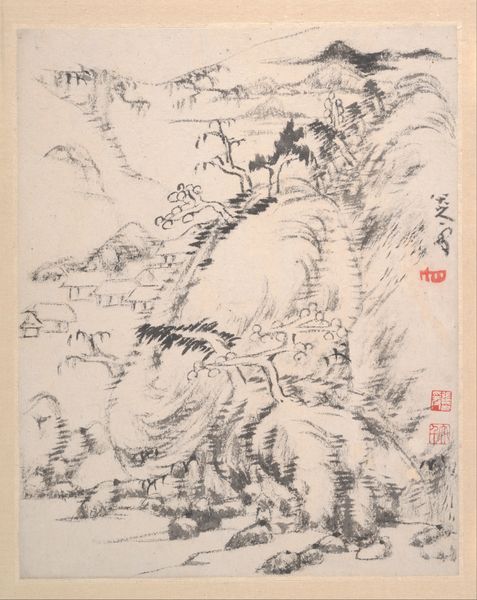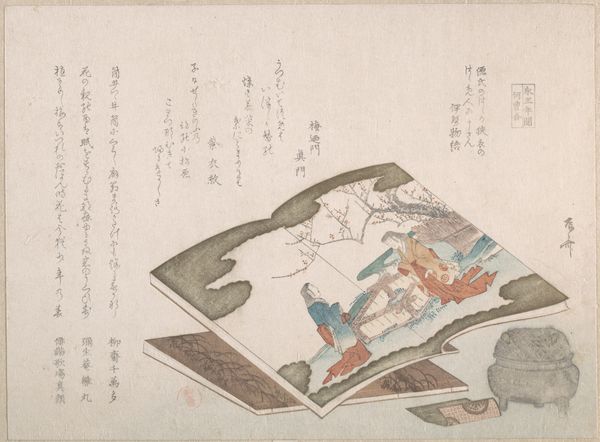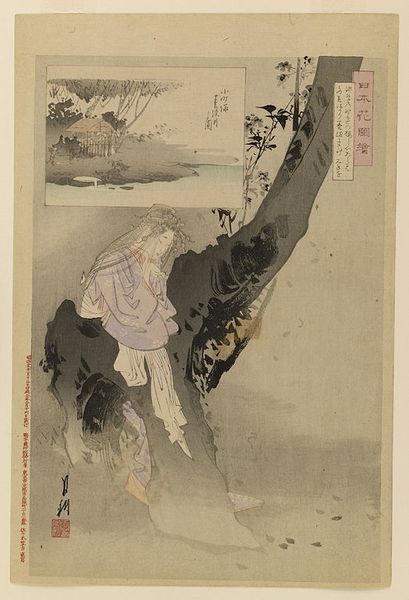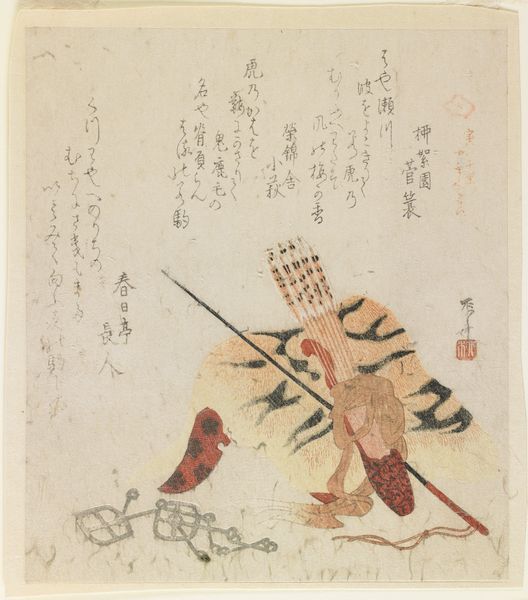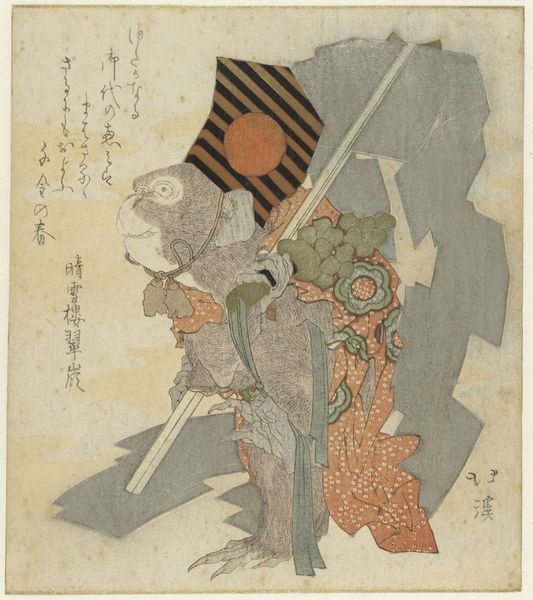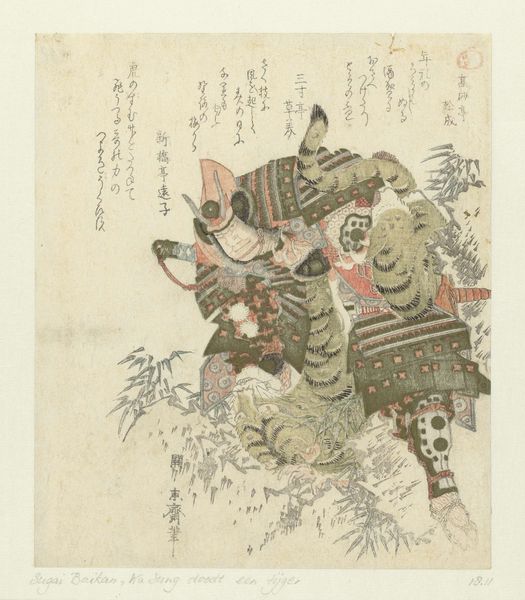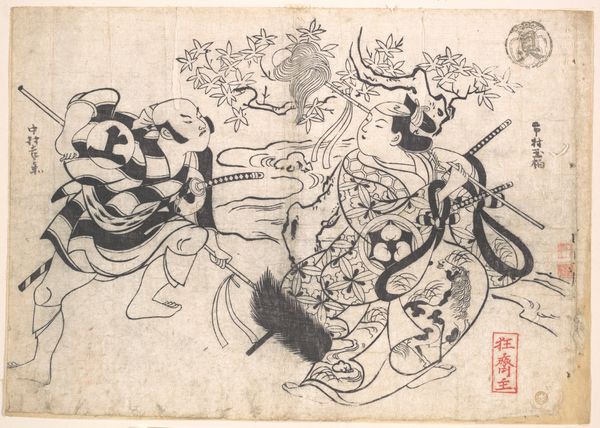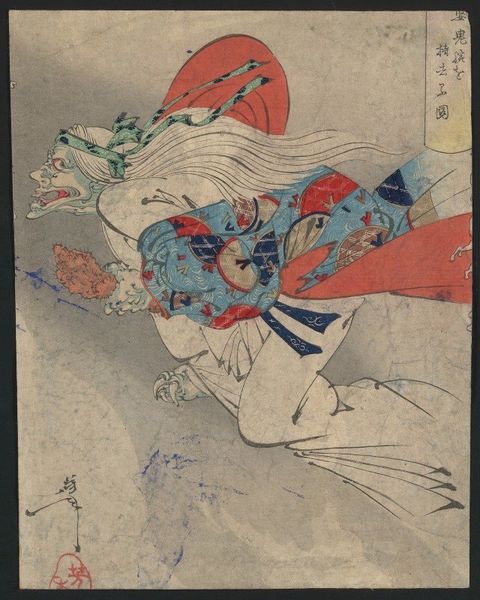
Drawing after Tsukioka Yoshitoshi æ岡 è³å¹´ (1839â?892) Tawara TÅda Hidesato and the Dragon Woman of Seta (Seta no ryÅ«jo), from the series One Hundred Ghost Stories from Japan and China (Wakan hyaku monogatari) c. 1865
0:00
0:00
Dimensions: 39 Ã 28 cm (15 3/8 Ã 11 in.)
Copyright: CC0 1.0
Editor: So, this is "Tawara Toda Hidesato and the Dragon Woman of Seta" by Tsukioka Yoshitoshi, part of the "One Hundred Ghost Stories" series. It's a woodblock print. I’m struck by the dynamic composition, the dragon woman seems so powerful. How do you interpret this work within its cultural context? Curator: It’s intriguing how Yoshitoshi uses the supernatural to comment on social anxieties. These ghost stories, while fantastical, were often allegories for real-world power struggles and moral lessons. Consider the rising merchant class; could the dragon woman represent disruptive societal forces? Editor: That’s a great point! I hadn't considered the socio-political commentary embedded within the imagery of folklore. I see the piece in a new light. Curator: Exactly. Yoshitoshi was a master at blending entertainment with social critique, reflecting the public's fascination with the uncanny and the political realities of his time.
Comments
No comments
Be the first to comment and join the conversation on the ultimate creative platform.


